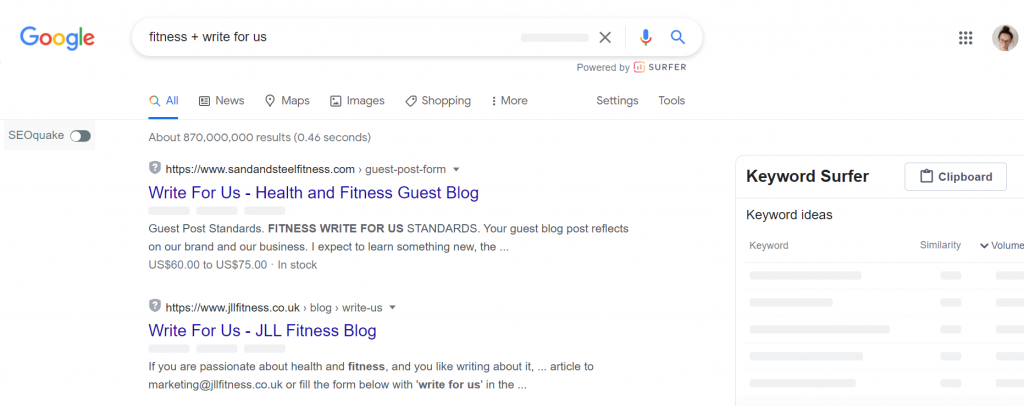
This post may contain affiliate links that at no additional cost to you, we may earn a small commission. Read the Disclosure Policy for more information.
Last Updated on January 9, 2025 by Katie
Are you wondering how to build a writing portfolio with no experience?
As an aspiring freelance writer, it can seem a daunting task to get your first paying clients.
But before you even think about going for paid gigs, you should create a writing portfolio to show prospective clients.
Think about it – say you applied for a freelance writing job and 10 other people have applied. 5 out of the 10 have a writing portfolio full of their best work.
If you have nothing to show, you won’t even be considered a candidate and you will be out the door immediately.
Building a writing portfolio shows off your writing skills so potential clients can see what you’re capable of.
And the extra practice writing goes a long way if you are a beginner with little experience.
Related reads:
- How to Become a Freelance Writer with No Experience (Ultimate Guide)
- How to Find Writing Clients as a New Writer
- 11 Best Freelance Writing Gigs for Newbie Writers
- 5 Best Courses In Udemy for Aspiring Writers
Summary of How to Build a Writing Portfolio with No Experience
- Decide on a Freelance Writing Niche
- Figure Out Who Your Ideal Client Is
- Write Content Pieces that Show What You Can Do
- Put Your Freelance Writing Portfolio Together
- Guest Post on High Traffic Blogs
- Set Up a Simple Freelance Writer Website
- Post Your Content on Free Writer Platforms
- Post Niche Specific Article on LinkedIn
- Offer to Write for Free or a Low Rate
What is a Writing Portfolio?
A writing portfolio is like a CV for your writing.
It’s a place to show off your best work, your writing style and it shows off any places your work has been published.
Your writing portfolio can be housed on a simple website, on other content platforms or a social site like LinkedIn articles.
Or, you can use an AI resume builder to build a digital CV and include links to your portfolio online.
How to Build a Writing Portfolio with No Experience?
Now we’re going to look at how to build a writing portfolio with no experience.
This will take some work, but the gains are well worth it for your future success.
You may feel a little lost when starting out as a new writer. I know how you feel because I’ve been there! But I’m here to tell you it’s worth it and not to give up to soon!
Now we’re going to go through building your writing portfolio step by step. Take your time to make the first pieces of content you write fantastic.
They can be re-used forever and if done well will bring you in a steady stream of clients.
Here are the simple steps to build your writing portfolio.
1. Decide On a Freelance Writing Niche
The first step is to decide what type of writing you want to do.
If you don’t know this yet, don’t worry. You might need to try out a few different styles of writing to see which suits you.
I wasn’t sure when I started, what type of writing I would do yet. I ended up taking guidance from my then-mentor and tried out many different projects.
Some types of writing you can get into include; copywriting, SEO article writing, blog writing, sales writing, email writing, resume writing, social media writing, product descriptions and niche-specific like technical, medical or travel writing for example.
Think about what skills and passions you have.
If you’ve worked in the medical field before, you can use this to your advantage and become a medical writer. Being specialised allows you to demand more per project as certain topics can’t be covered convincingly by everyone.
Or maybe your passion lies in health and fitness? Use this and set yourself up as a health and fitness copywriter or blogger.
But remember, in the beginning, it’s a good idea to take on a variety of projects to gain experience and fill out your portfolio.
Related reading: 27 Hugely Profitable Writing Niches (+How to Get Started)
2. Figure Out Who Your Ideal Client Is
If you’ve decided on your niche, now you can think about who your dream client is. By doing this, you can get into the mind of your ideal client and write content specifically for them.
If you don’t know this yet, don’t panic. You can write a variety of pieces if you have three ideal clients and favourite niches for example.
But, if your ideal client is a tech company and you want to write in this niche, have a think what content would impress them. Don’t be afraid to browse your ideal clients blog and social media accounts, to see what content they share.
This will give you ideas for what type of content to write. Never copy, but use what you see as inspiration and model how that content is formatted.
For example, if they have tons of list posts, write your own list posts. If they use tons of images and use stats often, do the same.
When you write content that your ideal client loves, they’ll be able to see how you could benefit their business.
3. Write Content Pieces that Show What You Can Do
My advice is to write at least three content pieces related to your niche and at least three extra in different niches to show your range.
As a new freelance writer, you might not make enough money just writing in one niche in the beginning.
When I started out, I wrote blog posts, SEO articles, website copy and product descriptions. I now focus solely on blog writing and website copy.
Remember these first few content pieces need to be good and they must show off your skills. The freelance writing world is competitive, with many more writers like you looking for their first gigs.
Take the time to edit and proofread your work. Use free tools like Grammarly and the Hemmingway Editor to sharpen up your text.
Spending a few extra minutes on each article, to make them the best ever will pay off in the long run.
Further reading: 15 Article Writing Tips for Beginners (Increase Your Earning Potential)
4. Put Your Freelance Writing Portfolio Together
Now you know how to build a freelance writing portfolio with no experience. The next step is to put your content pieces somewhere to show them off to prospective clients.
A few of the easiest ways to display your writing portfolio include:
- Create a folder in Google Docs. This way you can easily share the link when you apply for writing work.
- Write in Word and create a folder. Some people say not to do this, but every client I worked with when starting out accepted my samples being sent as Word attachments so this should be fine.
Here are more ways to display your portfolio content:
5. Guest Post On High Traffic Blogs
Guest posting is one of the things I wish I’d started doing earlier. I can’t stress enough how much this will help you as a writer.
A guest post is an article you write for someone else’s blog or website, usually in return for a link to your social media accounts or blog, plus a bio at the end of the article.
While you might think ‘’why would I write for free’’, it’s a golden opportunity to market yourself and get your writing onto a popular publication.
Prospective clients will also see you as more credible once your work has been published on a live publication.
I write guest posts now to get a backlink back to my blog which helps to build authority.
So, how do you find guest post opportunities?
The easiest way is to do a simple Google search: your niche + write for us/guest post or similar words.
You might see blog articles pop up that list all the websites offering guest post opportunities. This is great, as you’ll have a list immediately in front of you to start applying to.
Otherwise, Google will show you many websites that accept guest posts which you can go through.
Here’s an example in the fitness niche.
6. Set Up a Simple Writer Website
One of the first things I did as a new writer was to set up a simple website with samples on it.
It’s relatively affordable for web hosting and a domain name only costing a few dollars a month.
I host my writer’s website with Hostinger. They are affordable and have fast customer service (which is essential when you start out).
Or you can use a free website builder like Wix or Weebly.
Create a homepage telling potential customers how you can benefit them, and create an about page talking about your experience and training. Have a rates page and a sample page.
Link each page to the next so readers can easily scroll through it.
Once you start writing some guest posts, you can link out to these from your samples page.
You can also create a blog section which is an easy way to show off your writing.
7. Post Your Content on Free Writer Platforms
Medium is one of the most popular free content publishing platforms.
Anyone can set up a profile and start writing articles, which potentially gets seen by millions.
Once you build up some followers, you can join the Medium Partner Program where you get paid depending on the number of claps you receive on each post.
And it’s also a great place to store your portfolio articles that you can link to in job applications.
Other free content platforms you can post your articles for free include;
Further reading: 13 Freelance Writing Tips for Beginners to Grow a Successful Career
8. Post Niche-Specific Articles on LinkedIn
One of the best things you can do as a new writer is to set up a profile on LinkedIn.
Anyone who has a business, is in business, or who wants a job is on this platform. It’s a great place to network and even pick up clients.
Firstly, create a great bio telling people what you can do for them. Something along the lines of;
‘’I help businesses get more leads and sales through engaging, informative blog content’’.
Or..
” I write beauty product descriptions that make your products shine and get people to hit the buy button immediately.”
Next, list any qualifications and experience you have, link to any website or work you’ve completed and write a short description detailing why you are the best writer for the job.
Now you’re all set up, you can hit the ‘write article’ tab at the top of the homepage and start publishing content in your niche.
Aim to post 1-2 articles a week and engage with businesses and people you’d like to work for.
Once you start supporting their posts and they see your work, this could be the beginning of a great paid writing gig.
9. Offer to Write for Free or at a Low Rate
Many new writers start on the low-paid ‘content mills’ which can pay as low as $5 per article.
While this is a terrible rate, if you have no professional writing experience this is a good way to produce samples. And some content mills give you the chance to work your way up in the pay scale.
A few content mills worth applying for include;
Remember that you don’t have to work for these low rates forever. Use these content mills just to get real-world practice.
Another way to get ‘on-the-job experience’ is to cold email your dream customers on LinkedIn or through their website.
Offer your services for free for a limited amount of time.
Many writers say NEVER to write for free. But think about it. Say your dream customer responds and says ‘yes’ to you writing for them for one month free.
You do great work. You build up a good relationship. You show how reliable you are.
And at the end of the month, you may get offered a paid position.
The worst-case scenario is you can ask for a testimonial that will help you build credibility when applying for other writing jobs.
Further reading: 11 Content Writing Skills You Need to Make Money Writing
Now you know how to build a writing portfolio with no experience.
Aim to diversify your portfolio and be in more than one place online. As a beginner, I created my simple website but I also started writing on Medium and set up a profile on LinkedIn.
And even if you don’t feel confident enough to post your articles anywhere yet – still write regularly. You can keep your finished articles in a digital folder to share with prospective clients.
To become a great writer, you need to practice your craft and this takes time and effort. Set a goal of writing 2 – 4 articles a week.
You can even set yourself a challenge of writing 30 articles in 30 days! I did this and it was a tough, but rewarding experience.
How to Build a Writing Portfolio with No Experience – Final Thoughts
Now you can see how to build a writing portfolio with no experience.
Don’t feel that because you’re a newbie, that you can’t have a professional writing portfolio. You’d be mad not to create one and limit your chances of success.
Take the time to practice writing and make connections in the industry.
Writing guest posts for free may even lead to paid work in the future.
Now, it’s over to you. Do you have a writing portfolio? Did it help you get clients yet? Let me know in the comments.
Further reading:
- 24 Essential Tools to Improve Writing Skills
- How to Market Yourself as a Writer: 7 Highly Effective Strategies
- 15 Best Freelance Writing Websites to Find Paid Work
- 7 Common Mistakes Writers Make Looking for Clients
How to Build a Writing Portfolio with No Experience
















